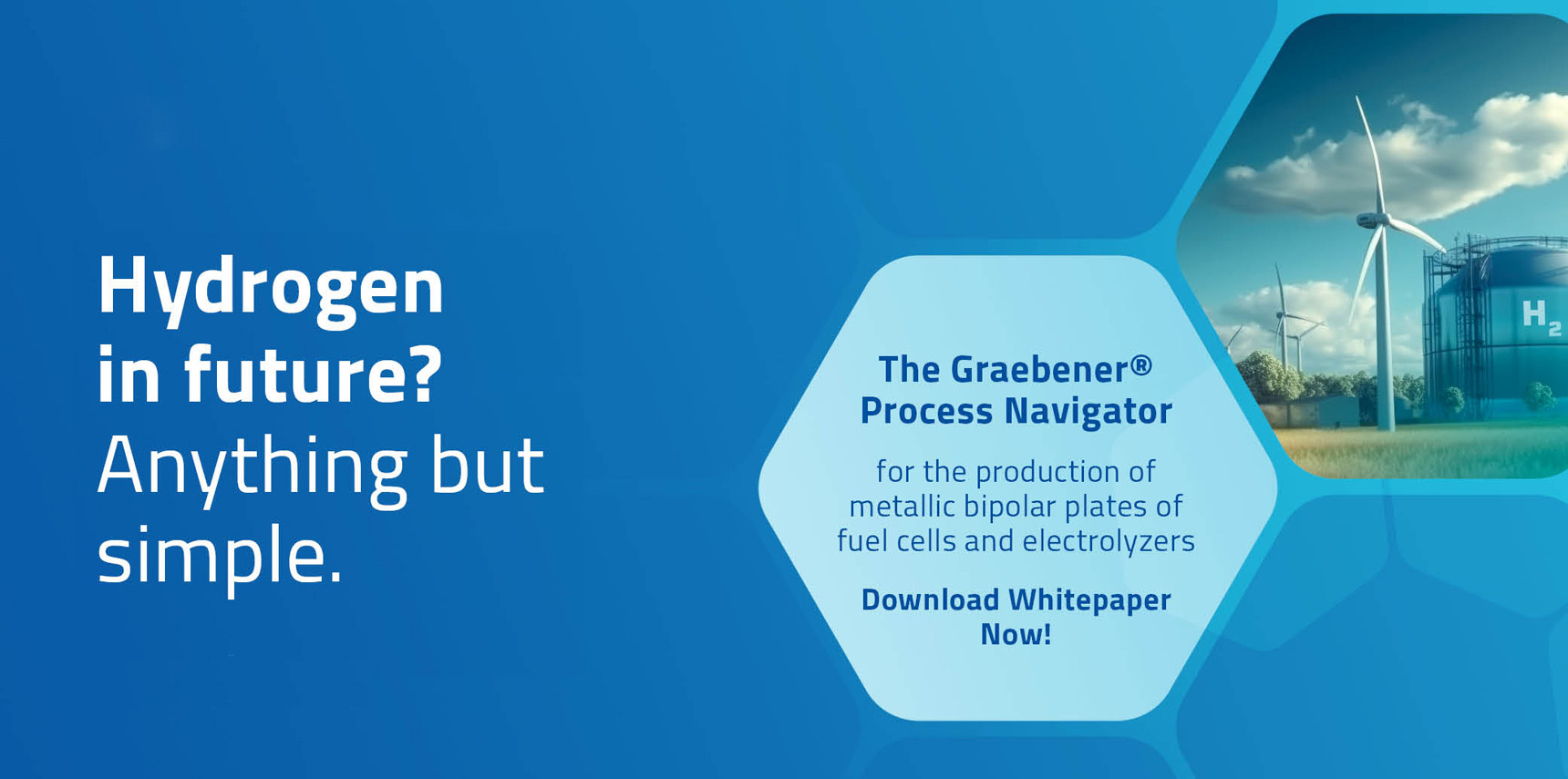The way to establishing a standardized production process for metallic bipolar plates for fuel cells and electrolyzers is anything but predefined. The challenges differ significantly depending on the specific application. Together with experts from industry and research, Graebener® presents a comprehensive white paper that organizes the complexity of the subject and provides specific recommendations for the various process steps.
Eight consecutive sub-steps
The production of metallic bipolar plates for fuel cells and electrolyzers is complex. In many cases, the corresponding technologies are not yet fully developed. "The process chain for manufacturing bipolar plates essentially comprises eight consecutive steps: Material selection, forming, cutting, welding, straightening, leak testing, coating and seal application. Each step is at a different stage of development and brings its own challenges for the process chain. Another difficulty is that the individual steps are often treated separately from one another. "There are no binding cross-process standards," states Fabian Kapp, Managing Director of Gräbener Maschinentechnik GmbH & Co. KG and Board Member at VDMA Fuel Cell Working Group, about the challenges associated with the production of metallic bipolar plates. "In the white paper, for the first time we are presenting public answers from the industry regarding the questions that drive the market and potential customers when planning production projects. Based on this, with the core of the publication, the process navigator, we provide a condensed orientation and make a concrete recommendation on what needs to be considered in the respective process step."
Challenges on the road to large-scale production
Collaborating with key players and institutions from the sector, in this white paper Graebener® highlights the challenges on the road to large-scale production of fuel cells and electrolyzers, with a particular focus on the application context. It compiles key questions that companies should ask when identifying suitable technologies and partners for their production projects.
Fabian Kapp comments: "The production of fuel cells and electrolyzers requires a differentiated approach that takes into account the diversity of applications and the complexity of the process. Our white paper is intended to provide guidance to actors in the industry by asking the right questions and providing insights that lead to more well-founded decisions."
Key questions that the white paper answers from different perspectives
Perspective of mechanical engineering and SMEs
What are the decisive factors for the successful production of metallic bipolar plates? What obstacles need to be overcome and what potential pitfalls need to be avoided? What is the current state of affairs and where do we need to go in the future if components are to be produced in series?
The publication also highlights various technology alternatives that are available to potential customers for their production lines. It also focuses on the factors in the upstream and downstream process steps that play a decisive role in overall success.
The research and development perspective
What interactions exist between application, quality and cycle time? What factors influence the issues of safety and service life? How can the current status of line production be assessed and what needs to be done to ensure that production technologies are ready for the market in the coming years?
Potential customers: Sales market perspective
Looking at the market, the question arises as to what will be needed in the future in order to make well-founded decisions. How much standardization versus flexibility will be necessary to effectively interlink the individual process steps? How can the requirements for quality and high cycle times be achieved?
Fabian Kapp is certain: "Only if all players cooperate the way into the future of hydrogen can be paved and a solid basis for investment decisions in the entire manufacturing process of fuel cells and electrolyzers can be created. The paper presented brings more clarity and orientation to the complex interrelationships of the production process and thus provides a milestone for a sustainable and innovative future."
Special thanks to the interview partners Simon Brugger, Jürgen Emig, Dr. Herbert M. Gabriel, Tobias Heinz, Janik Herrmann, Dr. Michael Hirsch, Dr.-Ing. Jörg Karstedt, Dr. Stephan Kohlsmann, Dr. Dominik Kraus, Patrick Raynal, Daniel Schönbohm and Werner Volk.
Return to news overview